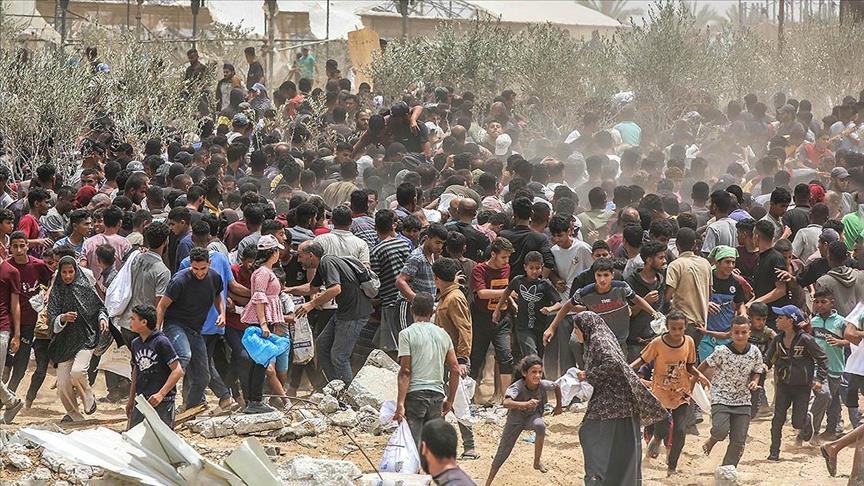At least 20 people lost their lives in southern Khan Younis on Wednesday morning during a violent and chaotic episode at a food distribution hub. Nineteen of the victims were trampled, while one person was fatally stabbed in what witnesses described as a terrifying stampede triggered by agitators within the crowd.
According to officials managing the aid operation, the stampede broke out when a group of armed individuals disrupted the orderly distribution of supplies, causing panic. The individuals, allegedly connected to a militant faction, reportedly incited unrest, turning what was intended to be a humanitarian relief effort into a deadly scramble for survival.
Eyewitness accounts describe a rapidly deteriorating situation. The crowd, made up largely of desperate civilians seeking food and essential supplies, had begun to grow restless after delays in distribution. Tensions were further inflamed when several individuals brandishing firearms pushed toward the front of the line, shouting and making threats. This incited widespread fear, with many people trying to flee the scene, only to be caught in a deadly crush.
A foreign aid worker was reportedly threatened with a firearm during the incident, underscoring the dangerous conditions faced by humanitarian personnel in the region. Security teams attempted to regain control, but the surge proved overwhelming. Most of the fatalities occurred within minutes as hundreds of people rushed forward, trampling others in their path.
Authorities linked the mayhem to deliberate actions by those seeking to disrupt the aid effort. These elements, believed to be affiliated with a militant group, have allegedly been involved in similar provocations in the past, using the chaos at aid sites to further their own agendas.
Since operations began in May, humanitarian distribution centers have repeatedly been the site of deadly incidents. Over 870 civilians are reported to have died either at or near these locations over the past few months, many due to crowd-related violence or clashes triggered by armed groups. This pattern of disruption has raised serious concerns about the safety and viability of humanitarian aid delivery in the region.
Efforts to maintain order at distribution sites have included coordination with local community leaders, security patrols, and scheduled time slots to manage crowds. However, these measures have often been undermined by unexpected flare-ups, including gunfire, theft, and intimidation tactics used by armed actors operating among the civilian population.
The latest tragedy has once again thrown a spotlight on the broader challenges facing relief efforts in the area. Food scarcity, displacement, and deteriorating infrastructure have created a humanitarian crisis of unprecedented scale, making distribution sites a flashpoint for conflict and desperation.
Officials overseeing aid operations continue to appeal for calm and for community cooperation to ensure the safety of both recipients and staff. They also call for accountability and stronger safeguards to prevent armed interference in future distributions.
The death toll from this latest incident is expected to rise, as several of the injured remain in critical condition. Emergency responders have called for greater international support to help secure distribution points and ensure that lifesaving supplies reach those who need them most—without further loss of life.

